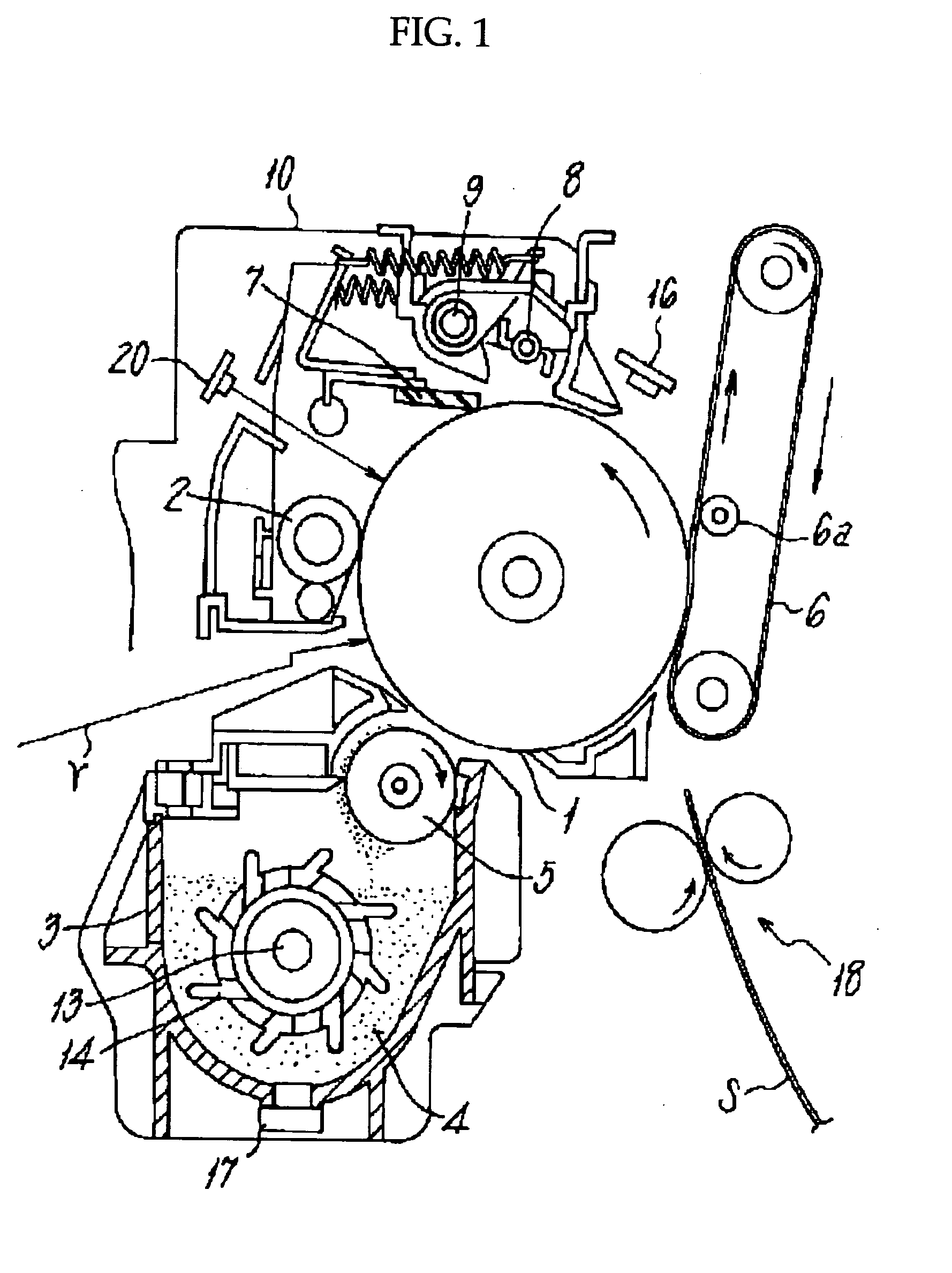Toner and developer for electrostatic development, production thereof, image forming process and apparatus using the same
a technology of electrostatic development and developer, which is applied in the field of toner, developer, container for a developer and image forming process, can solve the problems of deterioration of image quality, excessive generation of toner particles, and inability to obtain uniform particle shape by ordinary manufacturing methods of kneading and pulverizing, so as to improve the improve the effect of hot off-set resistance and excellent low-temperature image fixing properties
- Summary
- Abstract
- Description
- Claims
- Application Information
AI Technical Summary
Benefits of technology
Problems solved by technology
Method used
Image
Examples
examples
The present invention will be illustrated in further detail with reference to several examples below, which are never intended to limit the scope of the present invention. All parts are by weight.
preparation example a-1
Preparation of Organic Particle Emulsion
In a reactor equipped with a stirring rod and a thermometer were placed 683 parts of water, 11 parts of a sodium salt of sulfuric acid ester of ethylene oxide adduct of methacrylic acid ELEMINOL RS-30 (trade name, available from Sanyo Chemical Industries, Ltd.,), 138 parts of styrene, 138 parts of methacrylic acid, 110 parts of butyl acrylate and 1 part of ammonium persulfate, and the mixture was stirred at 400 rpm for 15 minutes to yield a white emulsion. The emulsion was heated to an inner temperature of 75° C., followed by reaction for 5 hours. The reaction mixture was further treated with 30 parts of a 1% aqueous solution of ammonium persulfate, was aged at 75° C. for 5 hours and thereby yielded an aqueous dispersion [Resin Particle Dispersion A-1] of a vinyl resin (a copolymer of styrene-methacrylic acid-butyl acrylate-sodium salt of sulfuric acid ester of ethylene oxide adduct of methacrylic acid). Particle Dispersion 1 had a volume-av...
preparation example a-2
Preparation of Aqueous Phase
Aqueous Phase A-1 was prepared as an opaque liquid by blending and stirring 990 parts of water, 83 parts of Particle Dispersion A-1, 37 parts of a 48.5% aqueous solution of sodium dodecyl diphenyl ether disulfonate ELEMINOL MON-7 (trade name, available from Sanyo Chemical Industries, Ltd.), and 90 parts of ethyl acetate.
PUM
| Property | Measurement | Unit |
|---|---|---|
| glass transition point Tg | aaaaa | aaaaa |
| temperature Tfb | aaaaa | aaaaa |
| volume-average particle diameter | aaaaa | aaaaa |
Abstract
Description
Claims
Application Information
 Login to View More
Login to View More - R&D
- Intellectual Property
- Life Sciences
- Materials
- Tech Scout
- Unparalleled Data Quality
- Higher Quality Content
- 60% Fewer Hallucinations
Browse by: Latest US Patents, China's latest patents, Technical Efficacy Thesaurus, Application Domain, Technology Topic, Popular Technical Reports.
© 2025 PatSnap. All rights reserved.Legal|Privacy policy|Modern Slavery Act Transparency Statement|Sitemap|About US| Contact US: help@patsnap.com


